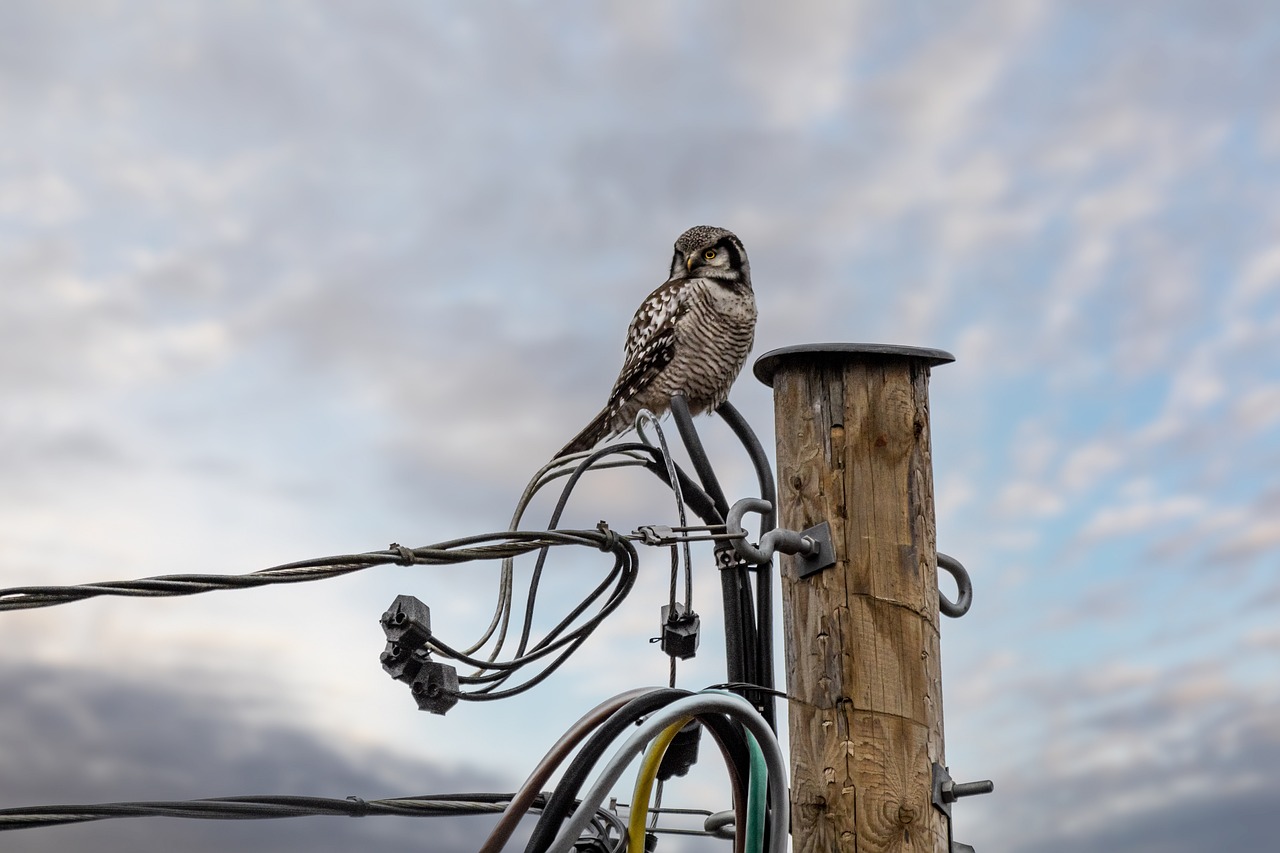The Northern Hawk-owl (Surnia ulula) is a unique and striking bird of prey, notable for its diurnal habits and hawk-like appearance. Found primarily in the northern boreal forests, this owl exhibits several distinctive characteristics that set it apart from other owls.
Physical Description
The Northern Hawk-owl is a medium-sized owl, measuring about 35 to 45 cm (14 to 18 inches) in length, with a wingspan of 69 to 82 cm (27 to 32 inches). It has a long tail and pointed wings, giving it a silhouette more reminiscent of a hawk than an owl. The facial disc is not as pronounced as in other owl species, and it lacks ear tufts. Its plumage is brown with white spots on the upperparts, and the underparts are white with brown streaks. The eyes are bright yellow, adding to its intense and alert expression.
Distribution and Habitat
The Northern Hawk-owl is found across the boreal regions of North America, Europe, and Asia. It prefers open coniferous or mixed forests, often near clearings, wetlands, or tundra edges. This species is well-adapted to cold climates and can be found as far north as the tree line.
Behavior and Diet
Unlike most owls, the Northern Hawk-owl is primarily diurnal, hunting during the day. Its diet mainly consists of small mammals such as voles and lemmings, but it also preys on birds, especially during the winter months when mammals are less accessible. The owl hunts from a perch, using its exceptional vision to spot prey from a distance. It then swoops down in a rapid, hawk-like flight to capture its quarry.
Breeding and Lifespan
The breeding season for the Northern Hawk-owl begins in late winter to early spring. They typically nest in tree cavities, broken-off tree stumps, or abandoned nests of other large birds. The female lays 3 to 13 eggs, which she incubates for about 25 to 30 days. During incubation, the male provides food for the female and, after hatching, for the chicks as well. The chicks fledge about four to five weeks after hatching but remain dependent on their parents for several more weeks. In the wild, Northern Hawk-owls can live up to 10 years, although their lifespan can be shorter due to predation and environmental factors.
Vocalizations
The Northern Hawk-owl is known for its distinctive calls, which include a rapid series of high-pitched whistles often described as a “kree-kree-kree” sound. These calls are most commonly heard during the breeding season when the owls are establishing territories and attracting mates.
Conservation Status
The Northern Hawk-owl is currently listed as Least Concern by the IUCN, indicating that its populations are relatively stable. However, like many wildlife species, it faces threats from habitat destruction and climate change. Conservation efforts are focused on preserving its natural habitat and ensuring a sustainable population of prey species.
In summary, the Northern Hawk-owl is a remarkable bird that combines the features of both owls and hawks. Its diurnal hunting habits, distinctive appearance, and important ecological role make it a fascinating subject of study and a vital component of the boreal forest ecosystem. Conservation efforts are essential to maintain the health and stability of its populations in the face of ongoing environmental changes.
Views: 1665
